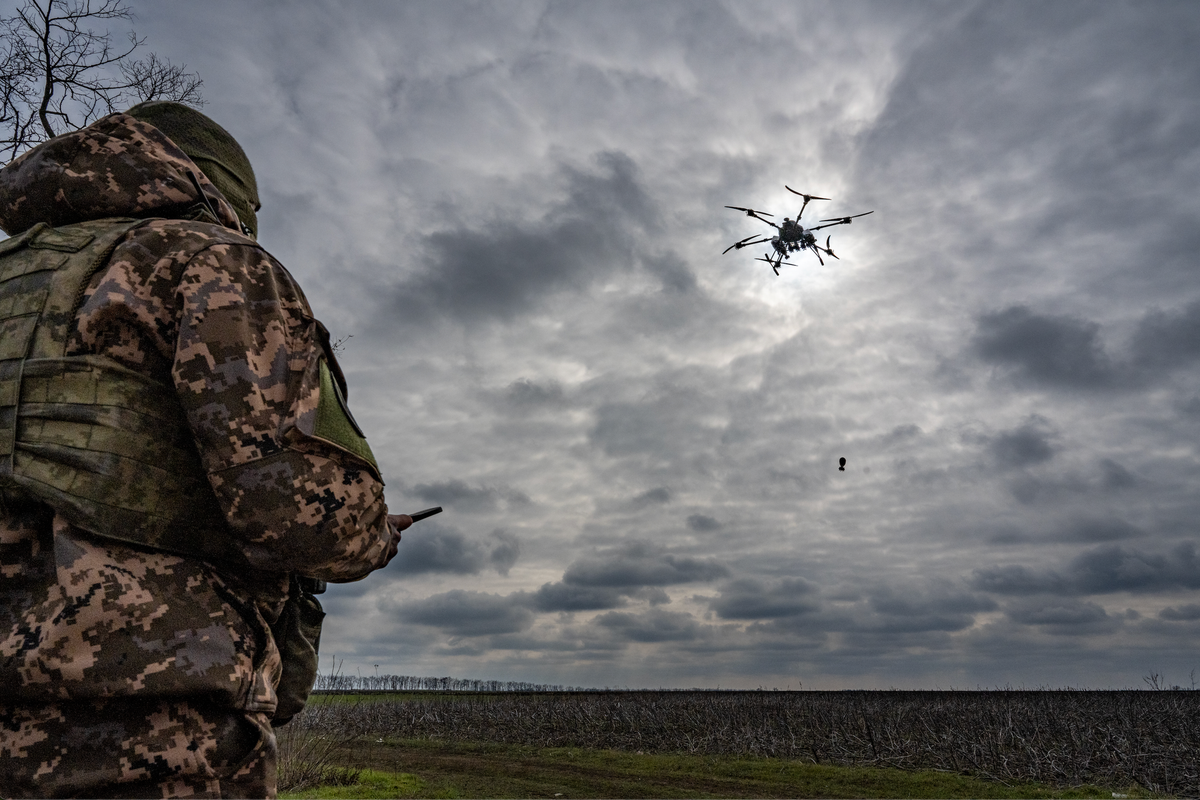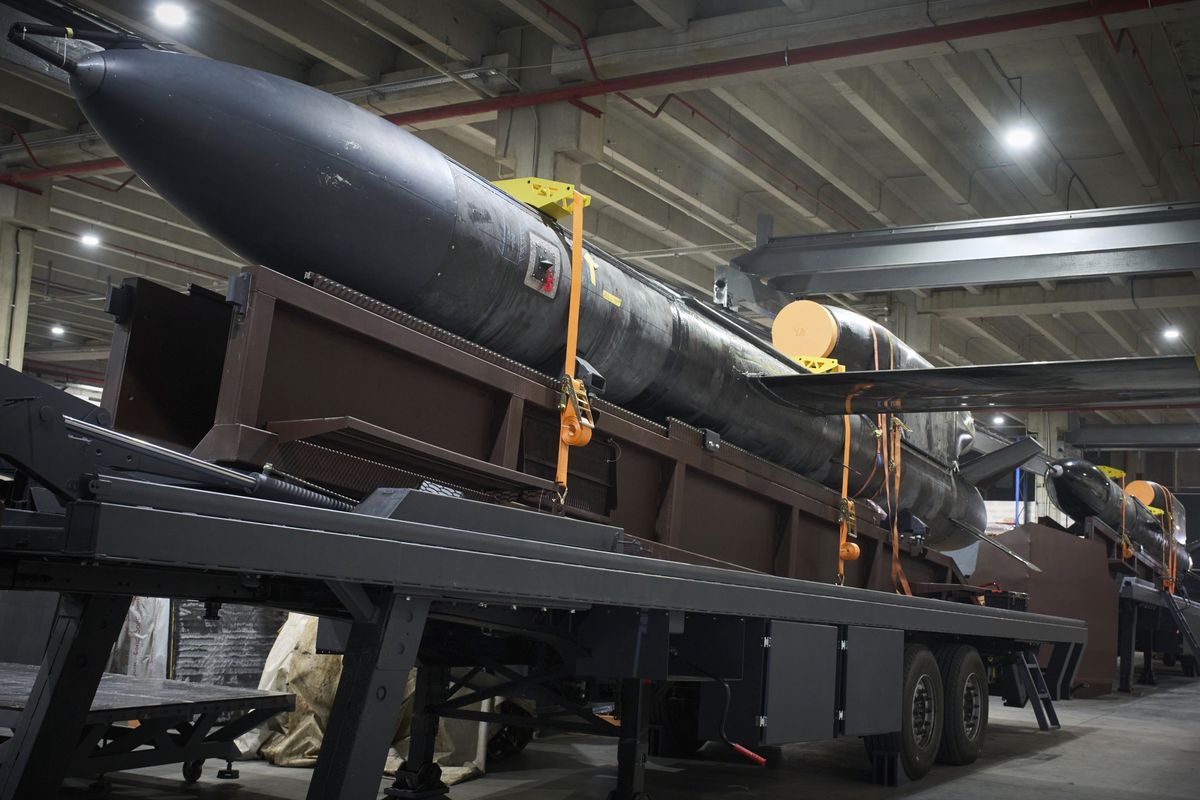DEEP DIVE — As battlefield setbacks mount, not even the weather is cooperating with Ukraine, which is forecast to have a colder-than-normal winter – its third full winter of resisting Russia’s invasion. The first snowfall is expected later this month.
But a deep freeze may also come from afar – and cause more harm than the weather. Ask Ukrainians from all walks of life, and they will tell you that “the fate of Ukraine depends on U.S. support,” as Oleksandr Merezhko, the head of parliament’s Foreign Affairs Committee, told The Cipher Brief. Perhaps no other nation - other than the U.S. - has more riding on the outcome of America’s Nov. 5 election than Ukraine.
Some Ukrainians will stay up all night to monitor election results. “Harris or Trump: Kyiv Awaits” is how the American Chamber of Commerce in Ukraine is promoting a day-after election event to discuss the results – assuming they are known by then – and analyze the implications for the nation.
While the importance of what happens in the U.S. is clear, there is no unanimity on whether a Kamala Harris or Donald Trump win would be better for Ukraine – despite the stark differences between the candidates when it comes to aid for the Ukrainian resistance.
Vice President Harris has been clear about her plans to continue support for Ukraine, and the dangers of Russian aggression – for Ukraine and the rest of Europe. Last month she called Vladimir Putin a “murderous dictator,” and said that Ukraine must not be made to surrender territory to Russia in exchange for peace. But aid under the Biden Administration has been slow. President Zelensky said at a press conference last week that only ten percent of military assistance promised by the U.S. this year, has actually reached Ukrainian troops.
Former President Trump has been sharply critical of U.S. aid to Ukraine, and his running mate, J.D. Vance, has put it bluntly: “I don’t really care what happens in Ukraine one way or the other,” he said on a podcast with Trump ally Steve Bannon in 2022.” Trump has boasted of a strong relationship with Putin – and praised him on occasion – and he has said repeatedly that he would end the war on day one of his second presidency, a pledge that would almost certainly mean ceding Ukrainian territory to Russia. Last month he went so far as to blame President Volodymyr Zelensky for starting the war.
Trump’s promise to bring a quick end to the war is also a tantalizing risk that some Ukrainians are willing to take – if he can somehow pressure Russia into a peace agreement that makes meaningful concessions (by all accounts, a big “if”). While 55 percent of Ukrainians remain opposed to any territorial concessions to Moscow, that figure has fallen in recent months. Meanwhile, there are many Ukrainians who, while appreciative of American support, have viewed the Biden administration’s policy as overly timid and lacking a strategy for victory. Ukrainians frequently complain they are being bled out because of incremental and inadequate aid.
This much is clear: Without stronger U.S. and allied support, Ukraine faces a “tough, long, hard, and in many respects, dark winter,’’ as retired U.S. Gen. David Petraeus said in a remote address to the Kyiv Security Forum last week.
As the temperatures drop and Russian strikes intensify, the winter will indeed be as Petraeus described it – no matter who wins the American presidency.
Energy sector: Will there be heat, water, and light?
Russia has stepped up nightly drone strikes on Ukrainian cities, including Kyiv, in the last month, probing for weaknesses in the nation’s air defenses. Ukraine said Russia fired 2,000 drones in October, a record that included strikes on every day of the month except for Oct. 14.
These drone attacks are seen as forerunners to deadlier and more destructive missile barrages that are expected soon as Russia intensifies a winter assault.
Already this year, Russian strikes have found enough gaps to cripple the nation’s energy supply, knocking out all of Ukraine’s thermal plants and much of its hydropower capacity. The most devastating strikes of the war came on a single day — Aug. 26 — when 200 missiles and drones inflicted heavy damage. Ukrainians believe the Kremlin will wait for subzero temperatures to resume these missile barrages in an attempt to destroy what’s left of the nation’s energy infrastructure.
The hits have knocked out 9 gigawatts (GW) of generation capacity – about half of the nation’s estimated peak winter needs. The European Union has pledged to cover 4.5GW by restoring damaged infrastructure or exporting electricity, made easier by Ukraine’s alignment with the European energy grid. However, Ukraine may still suffer a shortfall of up to a third of the 18.5 GW needed, according to the International Energy Agency – and more than that if the winter is unusually rough, and Russia’s expected strikes are especially devastating.
That could mean regular rolling blackouts or extended power outages of eight hours or more daily nationwide. And any major, sustained outages will, of course, harm the war effort.
Ukraine relies heavily on the remaining three nuclear power plants under its control to generate most of its electricity. Russia effectively stole Ukraine’s largest nuclear facility – and Europe’s largest as well – when its invading forces seized the Zaporizhzhia nuclear power plant early in the war.
Safeguarding the energy sector
In September, Ukrainian Prime Minister Denys Shmyhal said that Ukraine had protected 85% of its battered energy infrastructure from strikes, a claim that the Russians will undoubtedly test.
Independent energy expert Oleksandr Kharchenko told The Cipher Brief that while details of the protective measures are not public for security reasons, he assesses the overall situation as “not bad” in protecting energy infrastructure as Ukraine heads into winter. But he added that security needs to be improved around high-voltage substations that send power from nuclear power plants to the national grid.
Ukrainians of all stripes understand what is coming from Russia – that’s why they relentlessly implore Western allies to supply more and stronger air defenses.
“We know what to expect,” Alex Riabchyn, a former member of parliament who advises the government on energy issues, told The Cipher Brief. “We have (air defense) stocks from international partners. We increased capacity a bit from the European Union. It shouldn’t be worse than we had previously.”
Officials have been bracing the public for what lies ahead. Oleksiy Brekht, interim head of Ukrenergo, offered a grimmer forecast: “The winter will be the hardest of the previous three years.”
Many citizens and small businesses, with bitter experiences from the past two winters, have already armed themselves with power packs and generators for backup electricity. So far, Kharchenko, director of the Energy Industry Research Center, and other experts say the water and sewage systems have held up well in major cities because of greater protection.
Maxim Timchenko, the CEO of DTEK, Ukraine’s largest private energy company – which is owned by its richest citizen, billionaire Rinat Akhmetov, struck a cautiously optimistic note. On the one hand, he acknowledged to The Times of London that “we will always have a shortage of air defense munitions and systems. If the Russians launch hundreds of missiles and drones at once, then none of the systems can cope with such an intensive attack.”
On the other, Timchenko also told the newspaper in an article published on Oct. 15: “They will not switch off our country.”
Military setbacks – and financial uncertainties
Financially, Ukraine will enter 2025 in reasonably good shape, backed by an expected $50 billion loan from Western allies, which will be repaid from the interest on frozen Russian assets. It has also raised taxes to help pay for the war. Beyond next year, however, nothing is guaranteed. Kyiv will again lean heavily on its supporters in America – if it still has them – as well as those in Europe and Asia, where calls are rising to find a way to end the war.
As the strikes on the energy sector do their damage, Ukraine is also slowly but steadily losing ground to Russian advances in Donetsk Oblast, one of four regions – plus Crimea – that Russia illegally claims as its own. But even in Donetsk, Russia has a long way to go to achieve its aims and has shown little capacity to make quick and deep advances, barring a collapse of the Ukrainian frontline. Kyiv still controls more than 10,000 square kilometers –roughly 40% – of this region alone.
Ukraine, however, has its own military problems. It is short on weapons and soldiers. Only this year, Ukraine lowered its draft age to 25—compared to 18 for Russia, which has four times as many people. Many men do not want to join the military, fearing for their lives and wary of the indefinite length of duty.
Ukrainian President Volodymyr Zelensky’s administration is worried about social unrest if the government presses too hard, but Ukraine says it needs to recruit 160,000 additional soldiers this year. Another sign of trouble is the rising number of desertions – 51,000 this year alone through September. And while the government does not release casualty totals, Western estimates say the Ukrainian death toll is at least 80,000 soldiers.
A demographic slide
The battlefield and energy situations are expected to play major roles in whether the demographic crisis worsens over the winter.
Already, 7 million people have left the country, most fleeing to Europe as refugees, including an estimated 1 million fighting-age men. Many show no signs of returning home before the war ends. Mothers with children have been integrating in other countries for nearly three years, making it less likely they will return anytime soon. And many European nations, facing labor shortages, remain accommodating to the Ukrainians who have come.
The National Bank of Ukraine expects another 700,000 Ukrainians to flee by the end of 2025, partly driven by energy shortages during the winter.
Ukraine’s birth rate is also plummeting as deaths rise. While nobody knows for sure, demographers recently estimated that as few as 28 million people live in Ukrainian-controlled territory – a far cry from the 52 million who populated Ukraine after the collapse of the Soviet Union in 1991, and even the 40 million in 2021, the last year before the full-scale invasion.
As things stand, any combination of adverse scenarios – a cutoff of U.S. aid by the next president, major battlefield setbacks, or a winter without heat and light – could drive even more people to flee, further emptying out the country. Given all the variables, Ukrainians can only be certain that after a rough several months, spring will come.
[Ed note: updated headline]
Read more expert-driven national security insights, perspective and analysis in The Cipher Brief because National Security is Everyone’s Business.












